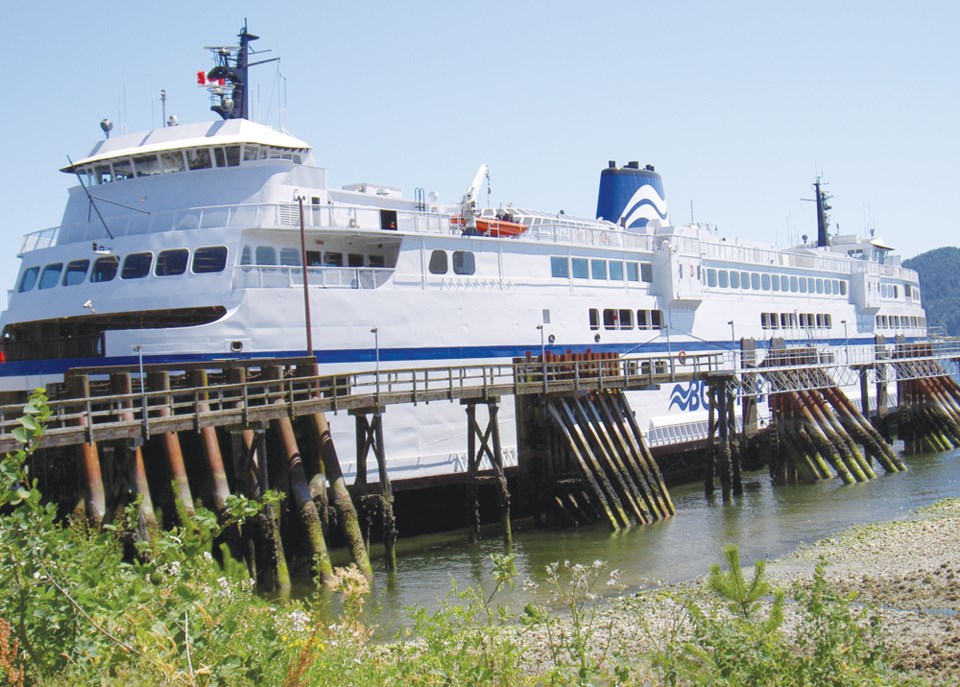The chairs of coastal B.C.’s 13 ferry advisory committees (FACs) want voters to have the facts at hand when they raise ferry issues with candidates in the upcoming provincial election.
The FAC chairs have started circulating a document they’re calling “Ferry Facts: Fare Information Sheet.”
“Continued ferry fare increases have had a real and increasingly devastating impact on our communities,” reads the double-sided sheet which includes graphs comparing fare increases to changes in the Consumer Price Index, changes in ferry ridership since 2003, and how fare revenue as a percentage of operating costs for BC Ferries stacks up against other publicly supported transportation systems.
“It’s not necessarily to make it an [election] issue, but if it becomes an issue to have people well informed,” said Brian Hollingshead, chair of the Southern Gulf Islands FAC and spokesman for the FAC chairs.
“We’re not saying go demand fare reductions, we’re not recommending anything. We’re just saying here are the facts, have a look at them and if you want to talk to [candidates] knocking on your door, then you’ve got some real numbers in front of you. They may be upsetting, but they’re not controversial – they’re real. It’s all factual.”
The fact sheet also features an explanation of how fares are set to show which decisions are made by the provincial government and which are made by BC Ferries.
“The government, in choosing how much to contribute to BC Ferries’ revenue needs, effectively sets the level of fares. The bulk of BC Ferries’ revenue comes from the government service fee and customer fares,” it says. “The government’s contribution dropped from 18 per cent of total revenue in 2003 to 17 per cent in 2016. During the same time frame, the fares portion increased from 64 per cent to 69 per cent.”
Hollingshead said the distinction between the political decisions behind what happens in the ferry system and the corporate decisions BC Ferries has to make to live up to its contract with the government is key.
“The big thing that a lot of people don’t understand is: what is the government’s role in setting the fare level that’s out there?” Hollingshead said. “We’re telling people that.”
Hollingshead is careful to point out that FACs are non-partisan and operate through BC Ferries, which was consulted during drafting the fact sheets. He said the company had no concerns about the accuracy of the contents, or the FAC chairs’ decision to send them out under the FAC banner.
Some FACs have created customized versions of the fact sheet, but Southern Sunshine Coast FAC chair Diana Mumford said her committee has no plans to produce one specific to the Langdale to Horseshoe Bay route (some of the data already in the document is from Route 3). The committee is sending the fact sheet to everyone on the FAC mailing list, including local governments and community associations. People who aren’t already on the FAC mailing list can request a copy by emailing [email protected].



